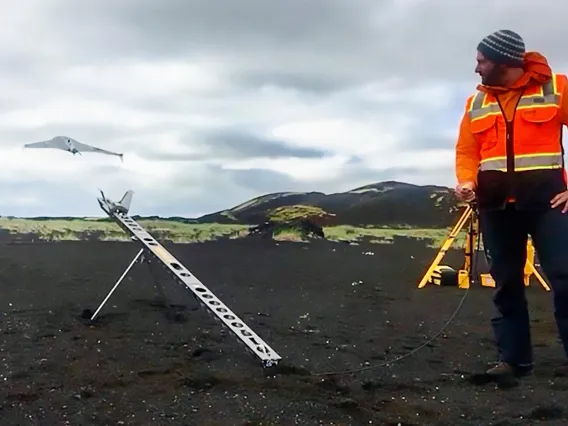
Iceland: The Wildcat Testing Ground
UArizona’s Lunar and Planetary Laboratory programs are influenced by early Apollo missions and Gerard Kuiper’s approach to teaching. He took his students on field trips to places on Earth that he felt were representative of what students might see on the moon or in the solar system.
Iceland: The Wildcat Testing Ground
×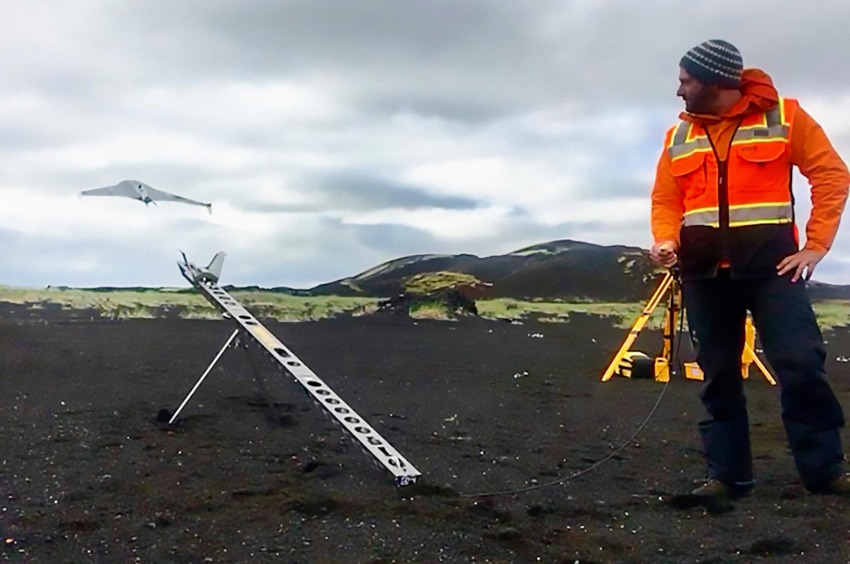
By Daniel Stolte, Alumni Association - Spring 2021
UArizona’s Lunar and Planetary Laboratory programs are influenced by early Apollo missions and Gerard Kuiper’s approach to teaching. He took his students on field trips to places on Earth that he felt were representative of what students might see on the moon or in the solar system, such as Meteor Crater in northern Arizona, dune fields or the extensive lava flows blanketing the Big Island of Hawaii.
Those types of instructive field trips continue today. “During our field trips, students visit planetary analog sites,” says Tim Swindle, director of the UArizona Department of Planetary Sciences and LPL. “It’s an important part of our department culture.
“We can send a robotic spacecraft to places in our solar system and beyond, but we’ll never be able to see them as well as we can see places on Earth,” Swindle says. “By comparing those sites using every scientific technique we can think of, we can learn what those places out there in space might be like.”
The latest explorations will include a team of scientists led by LPL’s Christopher Hamilton, an associate professor. They are gearing up to send drones on exploration missions across a vast lava field in Iceland to test a next-generation Mars exploration concept.
Hamilton is the principal investigator on a project that has been awarded a $3.1 million NASA grant to develop a new concept combining rovers and unmanned aerial systems, commonly known as drones, to explore regions of the red planet that have been previously inaccessible. These new Rover–Aerial Vehicle Exploration Networks will be tested in Iceland to explore volcanic terrains similar to those observed on Mars.
RAVEN adds an entirely new approach to NASA’s paradigm of planetary exploration, which traditionally has centered around four steps, each building on the scientific findings of the previous one: flyby, orbit, land and rove, according to Hamilton.
The first spacecraft sent to a previously unvisited body in the solar system commonly executes a flyby pass to collect as many data as possible to inform subsequent robotic missions, which consist of another space probe placed into orbit, then a lander, which studies the surface in one place, and, finally, a rover built to move around and analyze various points of scientific interest.
“With RAVEN, we’re adding ‘fly’ to that list,” Hamilton says. “The concept is geared toward building new technology for two robots to work together on an extraterrestrial body. We are going to look at how a rover and a drone can work together to maximize the scientific output of such a mission.”
Previous analog research at UArizona includes preparation for the 2008 Phoenix Mars mission, the first planetary mission led by a university. Then, a UArizona team traveled to Antarctica to study how the instruments they had developed would work in what is considered the most Mars-like environment on Earth.
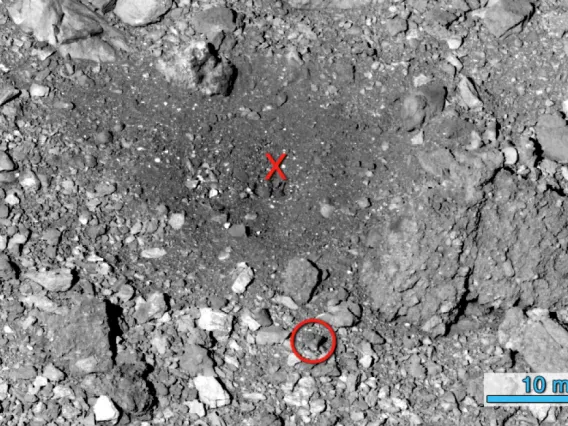
New Images: OSIRIS-REx Leaves its Mark on Bennu
New images of Bennu's surface captured during the final flyover reveal dramatic changes to the sample site.
New Images: OSIRIS-REx Leaves its Mark on Bennu
×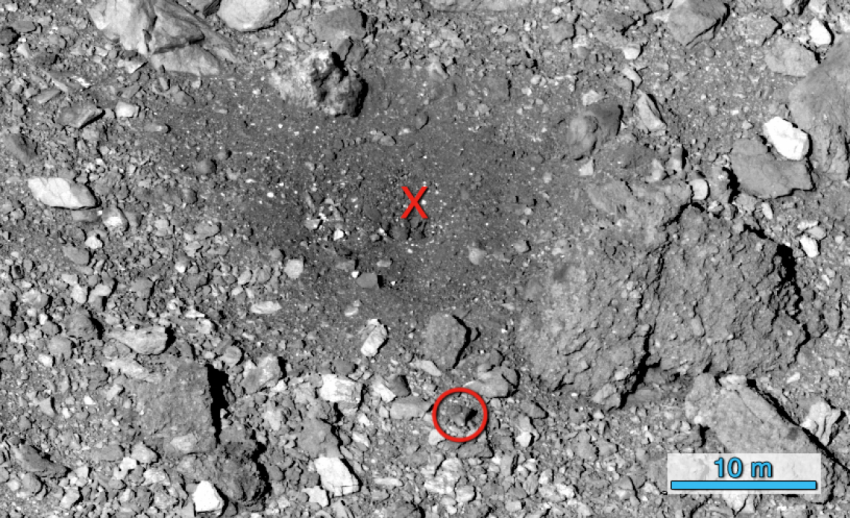
By Mikayla Mace Kelley, University Communications - April 15, 2021
Like boot prints on the moon, the University of Arizona-led OSIRIS-REx spacecraft left its mark on asteroid Bennu. Now, new images – taken during the spacecraft's final flyover on April 7 — reveal the aftermath of the historic encounter with the asteroid.
The spacecraft flew within 2.3 miles of the asteroid – the closest it has been since the touch-and-go, or TAG, sample collection event on Oct. 20. During TAG, the spacecraft's sampling head sunk 1.6 feet into the asteroid's surface and simultaneously fired a pressurized charge of nitrogen gas, churning up surface material and driving it into the collection chamber. The spacecraft's thrusters also launched rocks and dust during the maneuver to reverse course and back away from the asteroid.
Comparison of the two images reveal surface disturbance. At the sample site, there appears to be a depression, with several large boulders evident at the bottom, suggesting that they were exposed by sampling. There is a noticeable increase in the amount of highly reflective material near the TAG point against the mostly dark background of the surface, and many rocks were moved around.
Where thrusters fired against the surface, scientists found more substantial movement. Multiple small boulders were mobilized by the plumes into a shape similar to a campfire ring – similar to rings of boulders seen around small craters pocking the surface.
Jason Dworkin, the mission's project scientist at Goddard Space Flight Center, noticed that one boulder measuring 4 feet across on the edge of the sampling site seemed to appear only in the post-TAG image.
"The rock probably weighs around a ton, with a mass somewhere between a cow and a car," he said.
Dante Lauretta, UArizona planetary sciences professor and mission principal investigator, believes that this boulder likely was present in the pre-TAG image, but much nearer the sampling location, and the forces from the TAG event launched it 40 feet.
To compare the before and after images, the team had to meticulously plan this final flyover.
"Bennu is rough and rocky, so if you look at it from a different angle or capture it at a time when the sun is not directly overhead, that dramatically changes what the surface looks like," said Dathon Golish, a member of the OSIRIS-REx image processing working group, headquartered at UArizona. "These images were deliberately taken close to noon, with the sun shining straight down, when there's not as many shadows."
"These observations were not in the original mission plan, so we were excited to go back and document what we did," Golish said. "The team really pulled together for this one last hurrah."
The spacecraft will remain in Bennu's vicinity until departure on May 10, when the mission will begin its two-year cruise back to Earth. As it approaches Earth, the spacecraft will release the Sample Return Capsule that contains the sample from Bennu. The capsule will then travel through Earth's atmosphere and land under parachutes at the Utah Test and Training Range on Sept. 24, 2023.
Once recovered, the capsule will be transported to the curation facility at the agency's Johnson Space Center in Houston, where the sample will be removed for distribution to laboratories worldwide, enabling scientists to study the formation of the solar system and Earth as a habitable planet.
The OSIRIS-REx mission is the first NASA mission to visit a near-Earth asteroid, survey the surface, and collect a sample to deliver to Earth.
The University of Arizona leads the science team and the mission's science observation planning and data processing. NASA's Goddard Space Flight Center, located in Greenbelt, Maryland, provides overall mission management, systems engineering, and the safety and mission assurance for OSIRIS-REx. Lockheed Martin Space in Denver built the spacecraft and provides flight operations. Goddard and KinetX Aerospace are responsible for navigating the OSIRIS-REx spacecraft. OSIRIS-REx is the third mission in NASA's New Frontiers Program, which is managed by NASA's Marshall Space Flight Center in Huntsville, Alabama, for the agency's Science Mission Directorate in Washington.
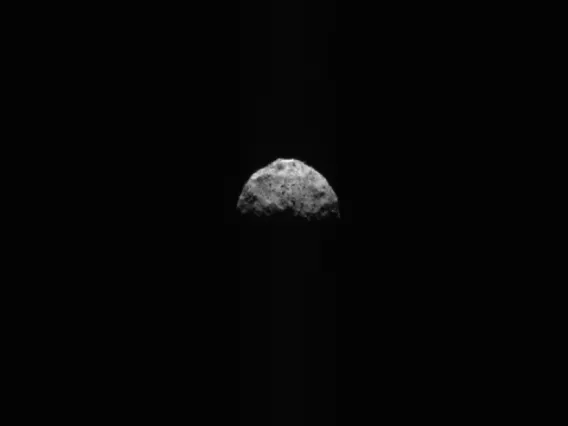
NASA’s OSIRIS-REx Completes Final Tour of Asteroid Bennu
Mission scientists will compare the final shots of the asteroid Bennu with images taken before the touch-and-go maneuver, which kicked up dust and rocks. Images are expected in about a week and will help scientists understand the asteroid's composition.
NASA’s OSIRIS-REx Completes Final Tour of Asteroid Bennu
×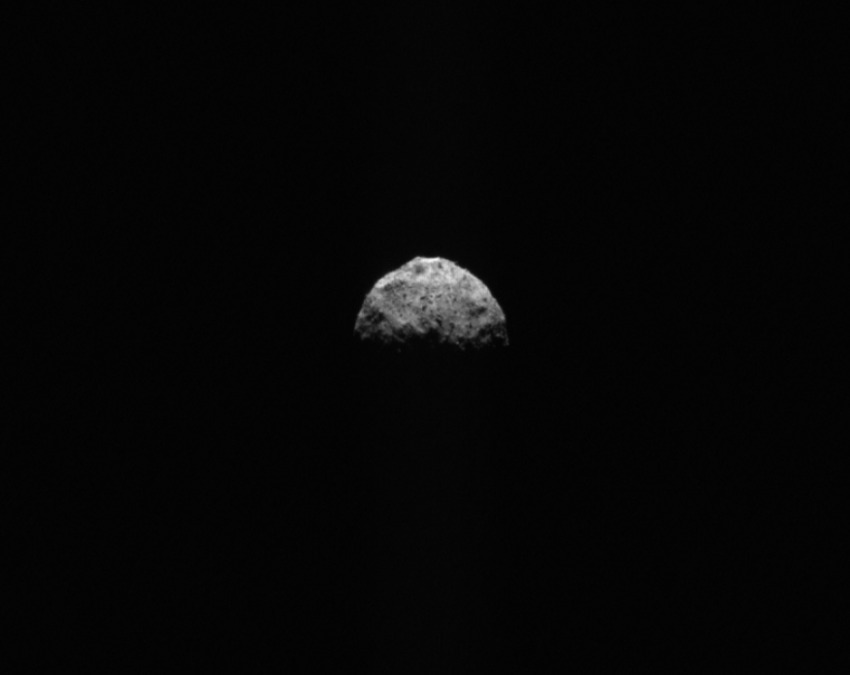
By Rani Gran, Goddard Space Flight Center - April 7, 2021
NASA's OSIRIS-REx spacecraft completed its last flyover of Bennu today at about 6 a.m. EDT, or 3 a.m. in Tucson, where the University of Arizona leads the mission. The mission team will have to wait a few more days to find out how the spacecraft changed the surface of Bennu when it grabbed a sample of the asteroid.
The OSIRIS-REx team added this flyby to document surface changes resulting from the touch-and-go, or TAG, sample collection maneuver on Oct. 20. The spacecraft is now slowly drifting away from the asteroid.
"By surveying the distribution of the excavated material around the TAG site, we will learn more about the nature of the surface and subsurface materials along with the mechanical properties of the asteroid," said mission principal investigator and UArizona planetary sciences professor Dante Lauretta. UArizona also leads the science team and the mission's science observation planning and data processing.
During the flyby, OSIRIS-REx imaged Bennu for 5.9 hours, covering more than a full rotation of the asteroid. It flew within 2.1 miles of Bennu's surface – the closest it has been since TAG.
It will take until at least April 13 for the spacecraft to downlink all of the data and new pictures of Bennu's surface recorded during the flyby. It shares the Deep Space Network antennae with other missions, such as Mars Perseverance, and typically gets four to six hours of downlink time per day.
"We collected about 4,000 megabytes of data during the flyby," said Mike Moreau, deputy project manager of OSIRIS-REx at NASA's Goddard Space Flight Center. "Bennu is approximately 185 million miles from Earth right now, which means we can only achieve a downlink data rate of 412 kilobits per second, so it will take several days to download all of the flyby data."
Once the mission team receives the images and other instrument data, it will study how OSIRIS-REx disturbed Bennu's surface. During touchdown, the spacecraft's sampling head sunk 1.6 feet into the asteroid's surface and simultaneously fired a pressurized charge of nitrogen gas. The spacecraft's thrusters kicked up a large amount of surface material during the back-away burn – launching rocks and dust in the process.
OSIRIS-REx, with its pristine and precious asteroid cargo, will remain in Bennu's vicinity until May 10, when it will fire its thrusters and begin its two-year cruise home. The mission will deliver the asteroid sample to Earth on Sept. 24, 2023.
NASA invites the public to watch OSIRIS-REx depart from Bennu on NASA.gov and NASA TV, on May 10 at 4 p.m. EDT.
NASA's Goddard Space Flight Center, located in in Greenbelt, Maryland, provides overall mission management, systems engineering, and the safety and mission assurance for OSIRIS-REx (Origins Spectral Interpretation Resource Identification Security - Regolith Explorer). Lockheed Martin Space in Denver built the spacecraft and provides flight operations. Goddard and KinetX Aerospace are responsible for navigating the OSIRIS-REx spacecraft. OSIRIS-REx is the third mission in NASA's New Frontiers Program, which is managed by NASA's Marshall Space Flight Center in Huntsville, Alabama, for the agency's Science Mission Directorate in Washington.
For more information about this story and OSIRIS-REx visit: NASA - OSIRIS-REx
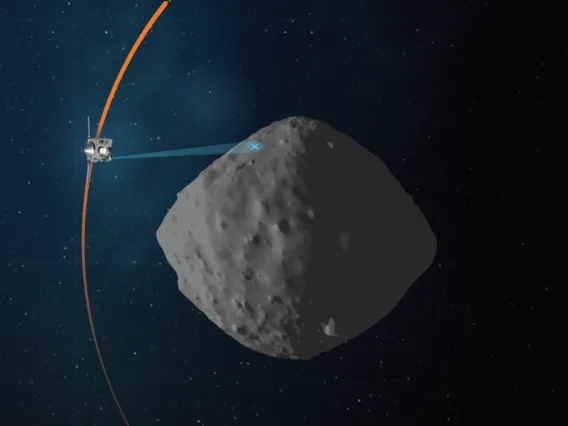
A Final Look At Bennu Before OSIRIS-REx Heads Home
The OSIRIS-REx mission is on the brink of discovering the extent of the mess it made on asteroid Bennu's surface during last fall's sample collection event.
A Final Look At Bennu Before OSIRIS-REx Heads Home
×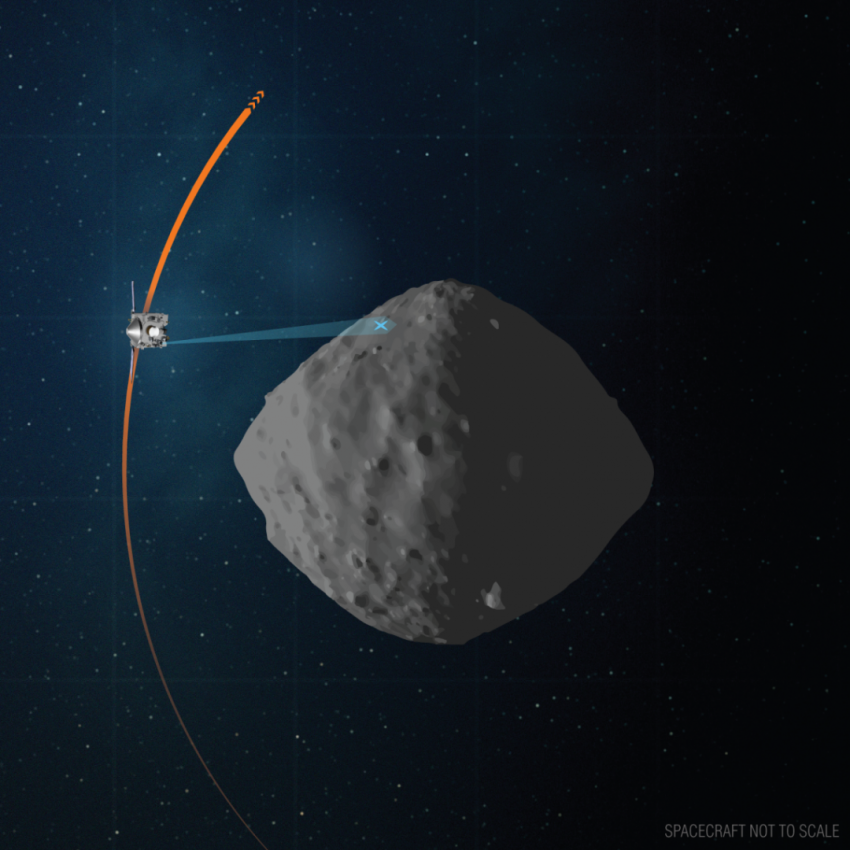
By Brittany Enos, OSIRIS-REx - April 1, 2021
On April 7, OSIRIS-REx will get one last close-up of asteroid Bennu as the spacecraft performs a final flyover to capture images of the asteroid's surface. While performing the flyover, the spacecraft will observe Bennu from a distance of about 2.3 miles – the closest it has been since the Touch-and-Go, or TAG, sample collection event on Oct. 20.
The University of Arizona-led OSIRIS-REx mission is the first NASA mission to visit a near-Earth asteroid, survey the surface and collect a sample to deliver back to Earth. Analysis of the sample could shed more light on the origins of the solar system and life on Earth.
The OSIRIS-REx team decided to add this final flyover after Bennu's surface was significantly disturbed by the TAG sample collection event. During TAG, the spacecraft's sampling head sunk 1.6 feet into the asteroid's surface and simultaneously fired a pressurized charge of nitrogen gas. The spacecraft's thrusters also mobilized a substantial amount of surface material during the back-away burn. Because Bennu's gravity is so weak, the various forces from the spacecraft had a dramatic effect on the sample site – launching many of the region's rocks and dust in the process. This final flyby of Bennu will provide the mission team an opportunity to learn how the spacecraft's contact with Bennu's surface altered the sample site and the region surrounding it.
"Given the amazing response of the asteroid surface to TAG, I directed the team to design one final observation sequence to document the state of the surface prior to our departure. These data provide scientific value to the returned sample and will allow for a much better understanding of the surface properties," said mission principal investigator and UArizona planetary sciences professor Dante Lauretta. The university leads the science team and the mission's science observation planning and data processing.
The single flyby will mimic one of the observation sequences conducted during the mission's Detailed Survey phase in 2019. The OSIRIS-REx science instruments will observe Bennu for 5.9 hours, more than one full rotation of Bennu. Within this timeframe, the PolyCam imager will obtain high-resolution images of Bennu's northern and southern hemispheres and its equatorial region. The team will then compare these new images with the previous high-resolution imagery of the asteroid obtained in 2019.
Several other science instruments will collect data during the flyover, including the MapCam imager, the OSIRIS-REx Thermal Emission Spectrometer, the OSIRIS-REx Visible and Infrared Spectrometer and the OSIRIS-REx Laser Altimeter. In addition to studying the disturbed surface, exercising these instruments will give the team a chance to assess the current state of each instrument, as dust coated their optics during the sample collection event. Understanding the health of the instruments is also part of NASA's evaluation of possible extended mission opportunities after the sample is delivered to Earth.
After the flyby, it will take one week for the data to be downlinked to Earth. The team will then inspect the images and other data to understand how OSIRIS-REx disturbed Bennu's surface material. At this point, the team will also be able to evaluate the performance of the science instruments.
The spacecraft will remain in asteroid Bennu's vicinity until May 10, when the mission will fire its main rocket engines and enter the Return Cruise phase, beginning the two-year journey back to Earth. As it approaches Earth, the spacecraft will jettison the Sample Return Capsule that contains the rocks and dust collected from Bennu. The capsule will then travel through the Earth's atmosphere and land under parachutes at the Utah Test and Training Range on Sep. 24, 2023.
Once recovered, the capsule will be transported to the curation facility at the agency's Johnson Space Center in Houston, where the sample will be documented and a portion distributed to laboratories worldwide, including at the University of Arizona, to allow scientists to study the formation of our solar system and Earth as a habitable planet.
NASA's Goddard Space Flight Center in Greenbelt, Maryland, provides overall mission management, systems engineering, and the safety and mission assurance for OSIRIS-REx. Lockheed Martin Space in Denver built the spacecraft and provides flight operations. Goddard and KinetX Aerospace are responsible for navigating the OSIRIS-REx spacecraft. OSIRIS-REx is the third mission in NASA's New Frontiers Program, which is managed by NASA's Marshall Space Flight Center in Huntsville, Alabama, for the agency's Science Mission Directorate in Washington.

Probing Alien Worlds: NASA's Pandora Mission Builds on UArizona Research
Tools and methods developed at the University of Arizona will help scientists study the atmosphere of exoplanets as part of NASA's Pandora mission concept.
Probing Alien Worlds: NASA's Pandora Mission Builds on UArizona Research
×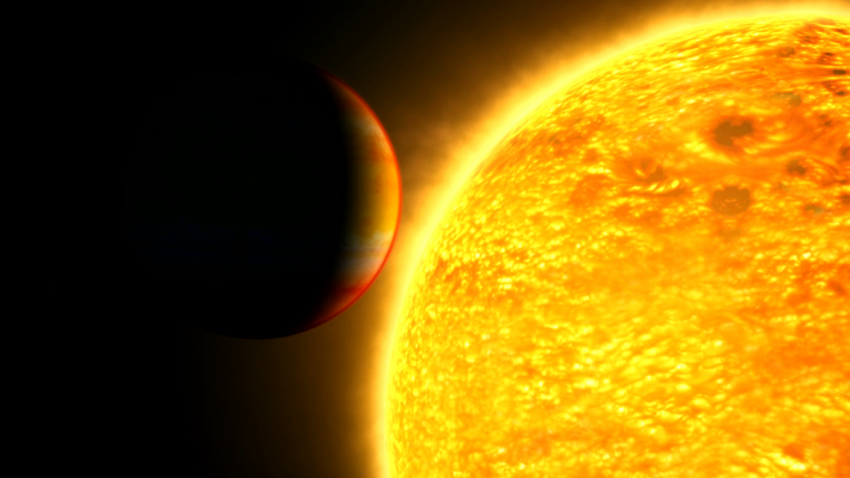
University Communications and NASA's Goddard Space Flight Center - March 24, 2021
In the quest for habitable planets beyond our own, NASA is studying a mission concept called Pandora, which could eventually help decode the atmospheric mysteries of distant worlds in our galaxy. One of four low-cost astrophysics missions selected for further concept development under NASA's new Pioneers program, Pandora would study approximately 20 stars and exoplanets – planets outside of our solar system – to provide precise measurements of exoplanetary atmospheres.
One of the co-investigators on the Pandora mission is Daniel Apai, an associate professor of astronomy and planetary science who heads a major NASA-funded research program called "Alien Earths," dedicated to finding which nearby planets are likely to host habitable worlds. His group has developed powerful tools and methods to create some of the first maps of the atmospheres of exoplanets and brown dwarfs.
"Equipped with the tools and methods we have developed, we will now use data from Pandora to build on advanced data analysis methods," said Apai, who leads Pandora's exoplanets science working group. "This will allow us to push the boundaries of high-precision atmospheric characterization of fascinating new worlds."
The Pandora mission concentrates on studying the atmospheres of stars and their planets by surveying planets as they cross in front of – or transit – their host stars. To accomplish this, Pandora would take advantage of a proven technique called transit spectroscopy, which involves measuring the amount of starlight filtering through a planet's atmosphere, and splitting it into bands of color known as a spectrum. These colors encode information that helps scientists identify gases present in the planet's atmosphere, and can help determine if a planet is rocky with a thin atmosphere like Earth or if it has a thick gas envelope like Neptune.
The Pandora mission would seek to determine atmospheric compositions by observing planets and their host stars simultaneously in visible and infrared light over long periods. Most notably, Pandora would examine how variations in a host star’s light impacts measurements of exoplanet atmospheres. This so-called stellar contamination remains a substantial problem in identifying the atmospheric makeup of planets orbiting stars covered in starspots – the equivalent of the more familiar sunspots – which can cause brightness variations as a star rotates.
Stellar contamination is a sticking point that complicates precise observations of exoplanets, according to Pandora co-investigator Benjamin Rackham, who obtained his doctoral degree in Apai's research group and is now a 51 Pegasi b Postdoctoral Fellow at the Massachusetts Institute of Technology in Cambridge.
"Pandora would help build the necessary tools for disentangling stellar and planetary signals, allowing us to better study the properties of both starspots and exoplanetary atmospheres,” Rackham said.
"Understanding how to disentangle the signals from planetary atmospheres and from those of their host stars is a key step toward studying the atmospheres of potentially habitable worlds," Apai added.
Pandora is a small satellite mission known as a SmallSat, one of three such orbital missions receiving the green light from NASA to move into the next phase of development in the Pioneers program. SmallSats are low-cost spaceflight missions that allow the agency to advance scientific exploration and increase access to space. Pandora would operate in sun-synchronous low-Earth orbit, which always keeps the sun directly behind the satellite. This orbit minimizes light changes on the satellite and allows Pandora to obtain data over extended periods. The mission is focused on trying to understand how stellar activity affects measurements of exoplanet atmospheres, which will lay the groundwork for future exoplanet missions aiming to find planets with Earth-like atmospheres.
Synergy in Space
Joining forces with NASA's larger missions, Pandora would operate concurrently with the James Webb Space Telescope, slated for launch later this year. Webb will provide the ability to study the atmospheres of exoplanets as small as Earth with unprecedented precision, and Pandora would seek to expand the telescope's research and findings by observing the host stars of previously identified planets over longer periods.
Missions such as NASA's Transiting Exoplanet Survey Satellite, Hubble Space Telescope, and the retired Kepler and Spitzer spacecraft have given scientists astonishing glimpses at these distant worlds, and laid a strong foundation in exoplanetary knowledge. These missions, however, have yet to fully address the stellar contamination problem, the magnitude of which is uncertain in previous studies of exoplanetary atmospheres. Pandora seeks to fill these critical gaps in NASA's understanding of planetary atmospheres and increase the capabilities in exoplanet research.
"Pandora is the right mission at the right time because thousands of exoplanets have already been discovered, and we are aware of many that are amenable to atmospheric characterization that orbit small active stars," said Jessie Dotson, an astrophysicist at NASA's Ames Research Center in California's Silicon Valley and the deputy principal investigator for Pandora. "The next frontier is to understand the atmospheres of these planets, and Pandora would play a key role in uncovering how stellar activity impacts our ability to characterize atmospheres. It would be a great complement to Webb's mission."
A Launch Pad for Exploration
NASA's Pioneers program, which consists of SmallSats, payloads attached to the International Space Station, and scientific balloon experiments, fosters innovative space and suborbital experiments for early-to-mid-career researchers through low-cost, small hardware missions. Under this new program, Pandora would operate on a five-year timeline with a budget cap of $20 million.

Io Volcano Observer: Following the Heat and Hunting Clues to Planet Evolution
A proposed mission called Io Volcano Observer (IVO) would visit Jupiter’s moon Io, which is a true volcanic wonderland with hundreds of erupting volcanoes gushing tons of molten lava and sulfurous gases at any moment. https://www.lpl.arizona.edu/faculty/mcewen
Io Volcano Observer: Following the Heat and Hunting Clues to Planet Evolution
×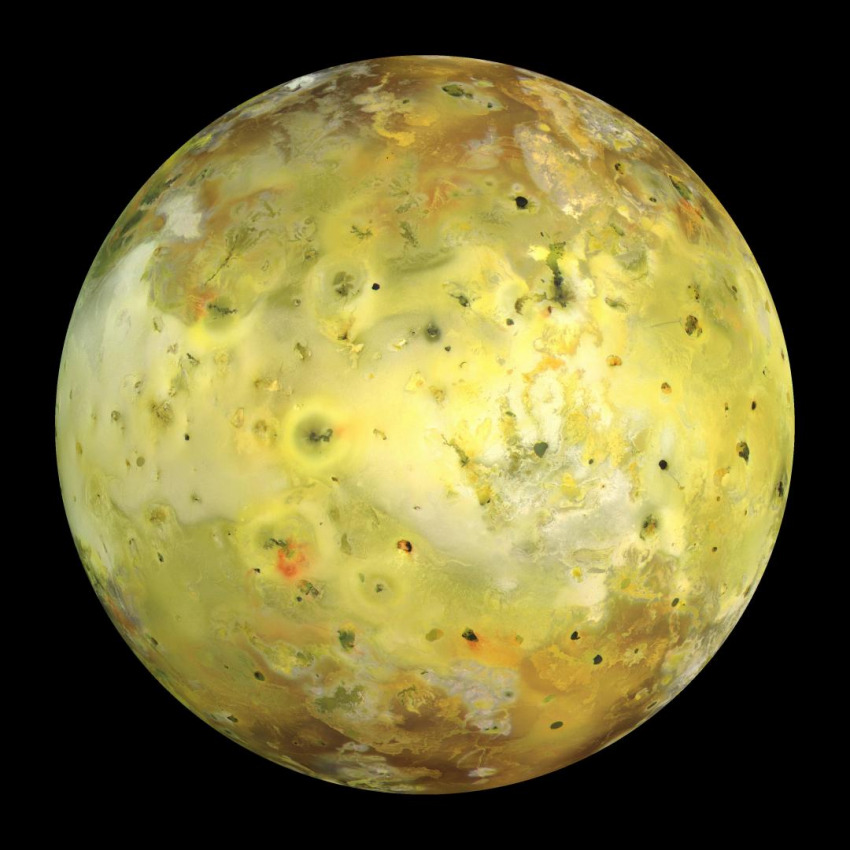
Editor Tricia Talbert, NASA - March 18, 2021
A proposed mission called Io Volcano Observer (IVO) would visit Jupiter’s moon Io, which is a true volcanic wonderland with hundreds of erupting volcanoes gushing tons of molten lava and sulfurous gases at any moment.
Wind the clock back a few billion years, and this could have been the surface of any young rocky planet. But today, in our solar system, only Io hosts this kind of hyperactivity. Under the colossal pull of Jupiter’s gravity and the passing orbital tugs of sibling moons Europa and Ganymede, Io is subject to punishing tides that stretch and squeeze the moon as it moves along its elliptical path.
Scientists know these tidal forces generate extreme heat inside Io — resulting in 20 times more heat flow than Earth – and, in general, are an important planetary process across the universe. But we’re still profoundly ignorant about how they actually work, said Alfred McEwen, a planetary geologist and regents' professor at the Lunar and Planetary Laboratory, University of Arizona.
“Major questions remain about where and how tidal heat is produced inside a planet or moon, how that heat escapes to the surface, and what effect this process has on planetary worlds across the cosmos,” he said.
But Io, with its spectacular volcanoes and extreme tidal activity, could address those questions. Learning exactly how this furnace functions within Io, McEwen said, will in turn help us understand how worlds evolve.
“It really is the best place in the solar system to understand tidal heating.”
From the Inside Out
As principal investigator, McEwen leads the team crafting IVO, which is under consideration for NASA’s Discovery Program.
Being developed by the Johns Hopkins Applied Physics Laboratory (APL) in Laurel, Maryland, the IVO spacecraft would make at least 10 close flybys of Io over four years, using a suite of specialized instruments to peer beneath Io’s bright, sulfur-covered surface, capture images and video of its extreme volcanism, and ultimately track Io’s heat energy from the inside out.
“We want to follow the heat,” said Laszlo Kestay, IVO deputy principal investigator from the U.S. Geological Survey. “And key to that is understanding where the heat is being generated inside Io.”
Depending on the distribution of solid and molten rock within the moon, tidal heating could be spread throughout its interior or concentrated closer to its surface. So IVO would measure the gravity and magnetic fields around Io to sense what’s happening inside.
For instance, one tantalizing possibility is that Io has a global magma ocean hiding under its mostly cold, rocky surface. As Jupiter’s magnetic field sweeps over the moon, IVO would detect the distortion in the magnetic field produced by currents generated inside the electrically conductive magma, picking up a different reading than, say, if Io’s insides were largely solid.
IVO would also combine geophysical measurements and new topographic maps to understand the thickness and movement of Io’s cold, rocky outer layer, and provide insights into how the Earth, Moon and other rocky planets worked shortly after their own formation, when they were cooling magma-ocean worlds.
Orbital Acrobatics
Like an acrobat, IVO would hang far from Jupiter, timing its plunges toward Io to reach the best locations – and at the precise moments -- to both collect the clearest observations of Io's magnetic and gravity fields, and measure the “wobble” Jupiter imposes on its orbit, another indicator of its internal structure.
Dipping as close as 120 miles (200 kilometers) above the moon, IVO would image about 90% of Io’s colorful surface and volcanism at down to about 900 feet (300 meters) per pixel, and smaller areas down to 3 m/pixel, and capture movies of the erupting lava and plumes on each flyby.
Viewing the poles on approach and departure, IVO would measure the distribution of heat coming from Io with capabilities no other spacecraft has had, and that can’t be observed from Earth. Infrared data from a thermal mapper will also help scientists understand lava temperature and chemistry.
IVO would be equipped with a mass spectrometer for sampling the gases erupting from Io’s volcanoes. These gases carry a sort of fingerprint that records the chemical evolution of Io and the entire Jovian system, allowing scientists to study its full history.
“It would be the first time anyone has taken in situ measurements of Io’s atmosphere, and that’s ripe ground for new discoveries,” said Kathy Mandt, IVO project scientist from APL.
“We know Io loses most of its heat through stunning eruptions that dwarf the volcanoes and lava flows we see on Earth,” she continued. “They’ll not only be awesome to watch, but they’ll also help us understand exactly how this process works from within.”
Changes in the System
“The movement of heat is an engine of change,” Kestay said. “IVO would investigate how the flow of heat has affected Io and the entire Jupiter system over time.”
The tons of volcanic gasses stripped from Io every second are spread widely by Jupiter's powerful magnetic field. IVO would zoom through this material, providing new insight into how it’s removed and where it goes – a first step in understanding the evolutionary changes in Io’s chemistry.
Volatiles escaping from Io have spread across the entire Jovian system, painting the surface of Europa, potentially supplying chemical ingredients for life to the ocean within Io’s closest neighbor. Scientists would also expect to learn more about the critical role tidal heating plays in warming the liquid water oceans under the icy shells of Europa and other potentially habitable worlds, like Saturn’s moons Titan and Enceladus.
“Using Io as a planet-sized natural laboratory, we’ll better understand processes that are important across the solar system,” McEwen said, “and beyond.”
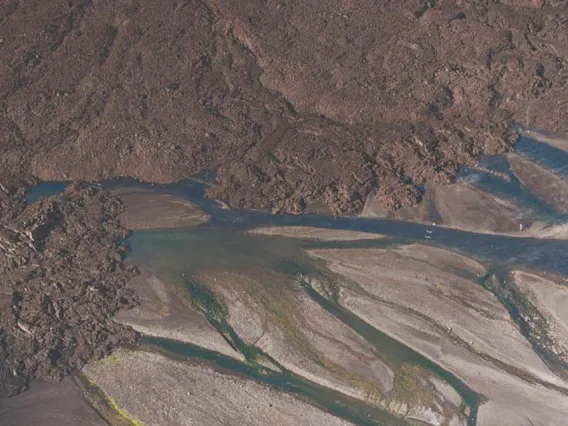
How Microbes in Iceland Can Teach Us About Possible Life on Mars
Dr Solange Duhamel and Dr Christopher Hamilton, based at the University of Arizona, have brought together their respective expertise in environmental microbiology and planetary science to investigate how life could survive on Mars. Fascinatingly, this has been done by exploring an area in Iceland that resembles the red planet.
How Microbes in Iceland Can Teach Us About Possible Life on Mars
×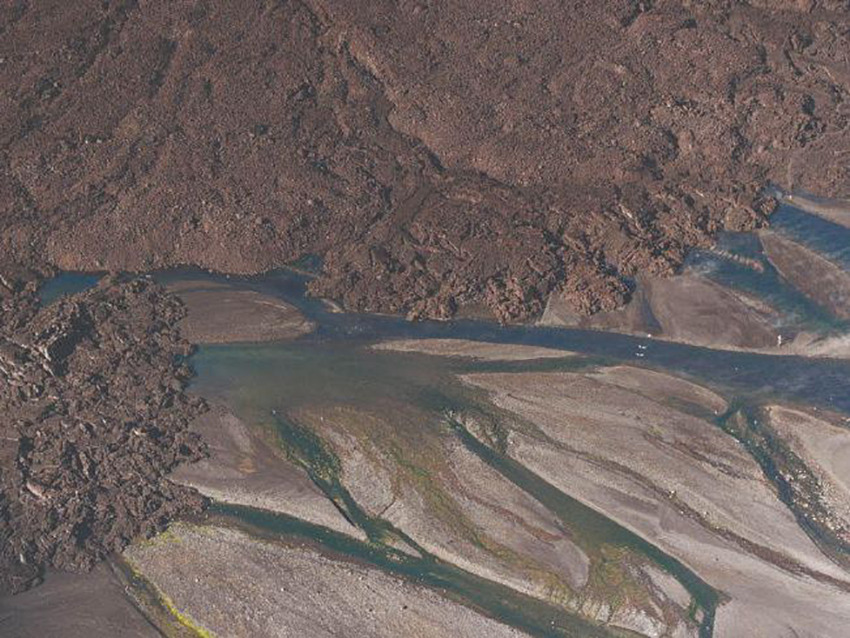
Futurum - March 9, 2021
When we think of astronauts, deep-sea exploration is not the first thing that springs to mind. Similarly, space walks are not usually associated with oceanographers. And yet, oceans are often used in the preparation for space exploration. For instance, lengthy dives in weighted diving suits mimic the Moon’s low-gravity environment, and underwater research labs provide a practice setting for life on the International Space Station.
Nonetheless, the connection between our oceans and space can go far beyond space walking and deep-sea diving. Dr Solange Duhamel, an oceanographer, and Dr Christopher Hamilton, a planetary scientist, both based at the University of Arizona, have pooled their expertise in two very different disciplines to work on collaborative research projects in astrobiology, including investigations of hydrothermal systems in Iceland, to uncover what life in these extreme environments might reveal about life on Mars.
WHY DID SOLANGE AND CHRISTOPHER GO ON AN EXPEDITION TOGETHER?
Six months after the end of the 2014–2015 Holuhraun eruption in Iceland, Christopher led a team that studied the lava flow-field and observed a lava-induced hydrothermal system where the lava had entered a segment of the Jokulsa a Fjollum river. However, the initial team did not include any biologists and so, Christopher invited Solange – an oceanographer and expert in environmental microbiology and biogeochemistry – to join them the following year. With Solange on board, the team returned to the field site to investigate the unusual forms of life that had developed within Holuhraun’s hydrothermal systems.
Christopher is a planetary volcanologist and the Holuhraun eruption – which took place in a pristine part of the Iceland highlands – was immediately important as an analogue for Mars. In contrast, Solange is an oceanographer, with expertise in how life can thrive in extreme environments. Solange explains, “When I joined the expedition led by Christopher, the team was composed of geologists and planetary scientists – I was the only biologist. I brought new competences to the group and together we have been able to gather a complementary set of physical, chemical and biological data to characterise the ecology and biogeochemistry of the system at Holuhraun.”
WHAT MAKES A TERRAIN, SUCH AS HOLUHRAUN, ANALOGOUS WITH MARS?
Holuhraun is located within a barren sand sheet in Icelandic highlands, between the Vatnajokull ice cap and the Askja central volcano. “This high-altitude location has very little vegetation and resembles the surface of Mars. Volcanic eruptions on Mars also tend to be larger than recent eruptions on Earth, but the 2014–2015 Holuhraun eruption generated the largest outpouring of lava in Iceland during the past 235 years,” explains Christopher. “This makes the terrain similar to Martian lava flows.”
WHAT HAVE THE LAVA-INDUCED HYDROTHERMAL SYSTEMS REVEALED ABOUT MARS?
Solange explains, “When the Holuhraun lava flow inundated a segment of the Jokulsa a Fjollum river, it created unusual forms of hydrothermal activity. This was very exciting because those conditions could mimic those found on Mars in the past.”
Given the extreme conditions on Mars, if there is life on the Red Planet, it must be adapted to extreme environments. On Earth, thermophiles (organisms that thrive at high temperatures between 50⁰C and 122⁰C), may be among the oldest forms of life on the planet. With so many volcanoes on Mars, it is possible that large lava flows – similar to the ones in Iceland – may have interacted with near-surface water to generate hydrothermal environments.
“One of the astonishing things about the recent Holuhraun eruption is how quickly life populated its lava-induced hydrothermal systems,” says Christopher. “Just months after the end of the eruption, hot springs emerging from the lava flow contained algae and other microorganisms that may have been hiding dormant in the sand, just waiting for the right conditions to spring back to life.” If similar microbes live on Mars, large volcanic eruptions might hold the key to the episodic flourishing of microbial life on Mars.
COULD THERE BE LIFE ON MARS?
Solange and Christopher’s studies have shown that life very quickly emerged in the lava-induced hydrothermal systems, which gives rise to the possibility that there could well be life in similar environments on Mars. The identification of potentially habitable locations on other planets is a fundamentally important issue, and NASA’s Mars 2020 mission – currently en route to Mars – will be the first rover capable of collecting astrobiologically relevant samples for return to laboratories on the Earth. This mission is particularly exciting because it will land in Jezero Crater, which includes volcanic units that may have generated hydrothermal systems just like the ones observed in Iceland.
A MARRIAGE OF DISCIPLINES
Solange and Christopher met while working on separate research projects in Hawaii twelve years ago. Now married, they have not only established their own successful careers investigating different scientific problems in environmental microbiology (Solange) and planetary science (Christopher), but have also come together to work on fascinating projects, such as this one in Iceland.
From those individual research projects in Hawaii, to travelling the world and conducting their own novel research, to collaborating together to investigate life in extreme environments, Solange and Christopher remind us just how much there is to explore in our world and how individual strengths and interdisciplinary collaboration reap rewards. The question is, where in the world will your explorations take you?

UArizona-Led HiRISE Camera Helped Guide Mars Rover to the Perfect Spot
The camera also captured the descent of NASA's Mars 2020 Perseverance rover.
UArizona-Led HiRISE Camera Helped Guide Mars Rover to the Perfect Spot
×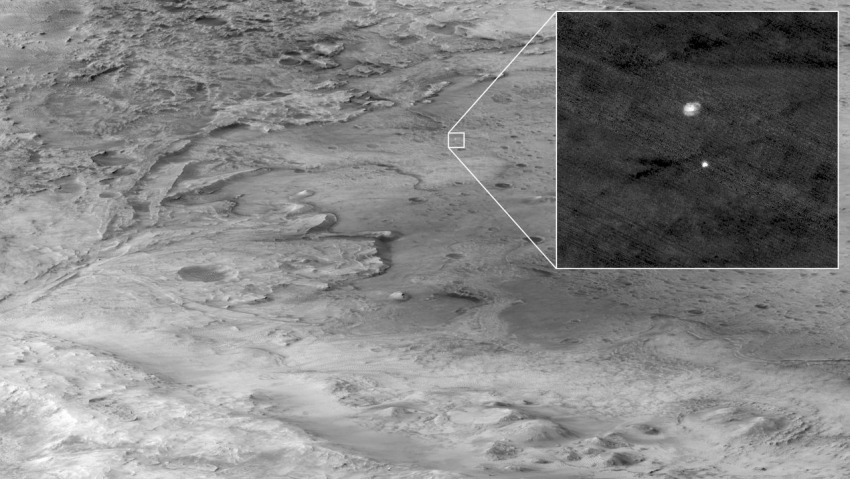
By Daniel Stolte, University Communications - February 24, 2021
The University of Arizona-operated High Resolution Imaging Experiment camera aboard the Mars Reconnaissance Orbiter captured the Feb. 18 descent of NASA's Mars 2020 Perseverance rover, the latest rover to touch down on the Red Planet. In the image above, Perseverance's landing capsule can be seen falling through the Martian atmosphere, with its parachute trailing behind.
Since entering the orbit of Mars in March of 2006, the HiRISE camera, provided and operated by the UArizona Lunar Planetary Laboratory, has photographed the surface of the Red Planet in unprecedented detail. The camera also provided data that helped Perseverance navigate to its designated landing site.
NASA's Mars 2020 mission is the first to land not just a surface vehicle, but also an air-going vehicle in the form of a drone strapped to the underside of the rover.
The mission faced a challenging landing on the Red Planet. It touched down in Jezero Crater, a 28-mile-wide expanse full of steep cliffs, boulder fields and other obstacles that could have jeopardized the landing. In the HiRISE image, an ancient river delta, which is the target of the Perseverance mission, can be seen entering Jezero Crater from the left.
A new technology called Terrain Relative Navigation, or TRN, allows spacecraft to avoid hazards autonomously.
Shane Byrne, a UArizona planetary sciences professor and acting principal investigator of HiRISE, explained how TRN works: "The lander takes pictures of the ground as it approaches and compares that to an onboard map of the surface, so it can figure out where it is and can actually fly to the right location and achieve a very accurate landing position."
The HiRISE camera captured images of the landing site at a resolution of less than a foot per pixel, Byrne explained. Maps were then created from that data and stored in the memory of the Perseverance lander.
"Especially when the rover gets close to the surface, it needs the higher resolution images to be able to compare what its cameras are seeing to what is actually on the ground below," he said.
At the time the descent image was taken, HiRISE was approximately 435 miles from Perseverance and traveling at about 6,750 mph. The extreme distance and high speeds of the two spacecraft were challenging conditions that required precise timing and for the Mars Reconnaissance Orbiter to pitch upward and roll hard to the left so that Perseverance was viewable by HiRISE at just the right moment.
To make the descent image possible, the HiRISE team worked closely with the spacecraft team at Lockheed Martin and the mission team at NASA's Jet Propulsion Laboratory. The group put together a sequence of maneuvers so that HiRISE's field of view swept across the descending rover at exactly the right time and exactly the right speed, Byrne said.
"On our end, we take parameters for the settings of the camera, such as exposure times and the best amount of contrast, that will result in the best possible image," Byrne said. "So, there are some calculations that go into this, but there also is some intuitive skill involved that our team has accumulated by taking these pictures for over a decade now."
Even prior to the Perseverance landing, HiRISE had been instrumental in determining landing sites for surface missions, including NASA's UArizona-led Phoenix Mars Lander and the Mars Curiosity Rover, which has been roaming the surface of the Red Planet since 2012.
Maneuvering the Mars Reconnaissance Orbiter into position for taking a descent image like this one takes fuel, obviously, but according to Byrne, the orbiter carries enough fuel onboard to continue operating at least until the late 2020s and possibly beyond.
NASA's Jet Propulsion Laboratory in Southern California, a division of Caltech, manages the Mars Reconnaissance Orbiter for NASA's Science Mission Directorate in Washington, D.C. Lockheed Martin Space in Denver built the spacecraft. The University of Arizona provided and operates HiRISE.
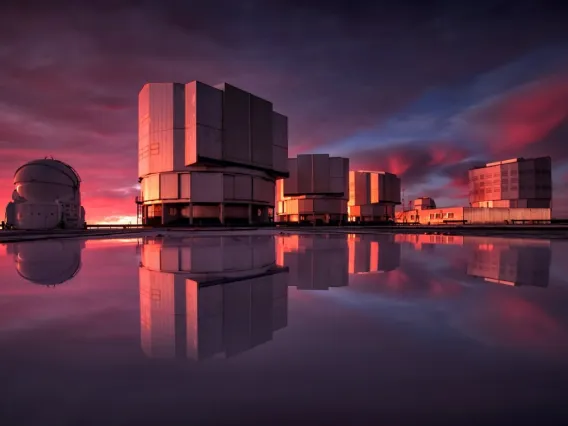
A New Way to Look for Life-Sustaining Planets
Associate Professor Daniel Apai is a member of an international team of astronomers that developed new capabilities that make it possible to directly image planets that could potentially harbor life within the habitable zone of a neighboring star system.
A New Way to Look for Life-Sustaining Planets
×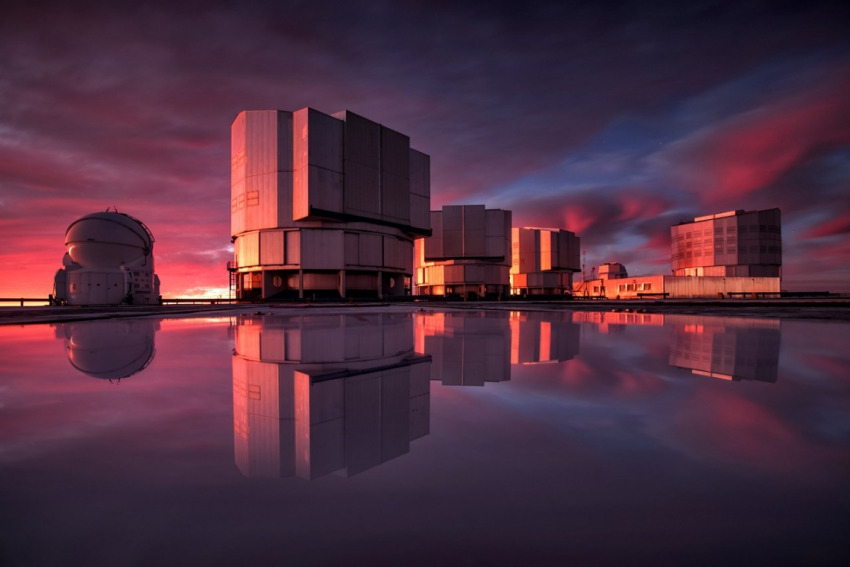
By Daniel Stolte, University Communications - February 10, 2021
It is now possible to capture images of planets that could potentially sustain life around nearby stars, thanks to advances reported today by an international team of astronomers in the journal Nature Communications.
Using a newly developed system for mid-infrared exoplanet imaging, in combination with a very long observation time, the study's authors say they can now use ground-based telescopes to directly capture images of planets about three times the size of Earth within the habitable zones of nearby stars.
Efforts to directly image exoplanets – planets outside our solar system – have been hamstrung by technological limitations, resulting in a bias toward the detection of easier-to-see planets that are much larger than Jupiter and are located around very young stars and far outside the habitable zone – the "sweet spot" in which a planet can sustain liquid water. If astronomers want to find alien life, they need to look elsewhere.
"If we want to find planets with conditions suitable for life as we know it, we have to look for rocky planets roughly the size of Earth, inside the habitable zones around older, sun-like stars," said the paper's first author, Kevin Wagner, a Sagan Fellow in NASA's Hubble Fellowship Program at the University of Arizona's Steward Observatory.
The method described in the new paper provides more than a tenfold improvement over existing capabilities to directly observe exoplanets, Wagner said. Most studies on exoplanet imaging have looked in infrared wavelengths of less than 10 microns, stopping just short of the range of wavelengths where such planets shine the brightest, he said.
"There is a good reason for that because the Earth itself is shining at you at those wavelengths," Wagner said. "Infrared emissions from the sky, the camera and the telescope itself are essentially drowning out your signal. But the good reason to focus on these wavelengths is that's where an Earthlike planet in the habitable zone around a sun-like star is going to shine brightest."
The team used the Very Large Telescope, or VLT, of the European Southern Observatory in Chile to observe our closest neighbor star system: Alpha Centauri, just 4.4 light-years away. Alpha Centauri is a triple star system; it consists of two stars – Alpha Centauri A and B – that are similar to the sun in size and age and orbit each other as a binary system. The third star, Alpha Centauri C, better known as Proxima Centauri, is a much smaller red dwarf orbiting its two siblings at a great distance.
A planet not quite twice the size of Earth and orbiting in the habitable zone around Proxima Centauri has already been indirectly detected through observations of the star's radial velocity variation, or the tiny wobble a star exhibits under the tug of the unseen planet. According to the study's authors, Alpha Centauri A and B could host similar planets, but indirect detection methods are not yet sensitive enough to find rocky planets in their more widely separated habitable zones, Wagner explained.
"With direct imaging, we can now push beneath those detection limits for the first time," he said.
To boost the sensitivity of the imaging setup, the team used a so-called adaptive secondary telescope mirror that can correct for the distortion of the light by the Earth's atmosphere. In addition, the researchers used a starlight-blocking mask called a coronagraph that they optimized for the mid-infrared light spectrum to block the light from one of the stars at a time. To enable observing both stars' habitable zones simultaneously, they also pioneered a new technique to switch back and forth between observing Alpha Centauri A and Alpha Centauri B very rapidly.
"We're moving one star on and one star off the coronagraph every tenth of a second," Wagner said. "That allows us to observe each star for half of the time, and, importantly, it also allows us to subtract one frame from the subsequent frame, which removes everything that is essentially just noise from the camera and the telescope."
Using this approach, the undesired starlight and "noise" – unwanted signal from within the telescope and camera – become essentially random background noise, possible to further reduce by stacking images and subtracting the noise using specialized software.
Similar to the effect to noise-canceling headphones, which allow soft music to be heard over a steady stream of unwanted noise, the technique allowed the team to remove as much of the unwanted noise as possible and detect the much fainter signals created by potential planet candidates inside the habitable zone.
The team observed the Alpha Centauri system for nearly 100 hours over the course of a month in 2019, collecting more than 5 million images. They collected about 7 terabytes of data, which they made publicly available.
"This is one of the first dedicated multinight exoplanet imaging campaigns, in which we stacked all of the data we accumulated over nearly a month and used that to achieve our final sensitivity," Wagner said.
After removing so-called artifacts – false signals created by the instrumentation and residual light from the coronagraph – the final image revealed a light source designated as "C1" that could potentially hint at the presence of an exoplanet candidate inside the habitable zone.
"There is one point source that looks like what we would expect a planet to look like, that we can't explain with any of the systematic error corrections," Wagner said. "We are not at the level of confidence to say we discovered a planet around Alpha Centauri, but there is a signal there that could be that with some subsequent verification."
Simulations of what planets within the data are likely to look like suggest that "C1" could be a Neptune- to Saturn-sized planet at a distance from Alpha Centauri A that is similar to the distance between the Earth and the sun, Wagner said. However, the authors clearly state that without subsequent verification, the possibility that C1 might be due to some unknown artifact caused by the instrument itself cannot be ruled out yet.
Finding a potentially habitable planet within Alpha Centauri has been the goal of the initiative Breakthrough Watch/NEAR, which stands for New Earths in the Alpha Centauri Region. Breakthrough Watch is a global astronomical program looking for Earthlike planets around nearby stars.
"We are very grateful to the Breakthrough Initiatives and ESO for their support in achieving another steppingstone towards the imaging of Earthlike planets around our neighbor stars," said Markus Kasper, lead scientist of the NEAR project and a co-author on the paper.
The team intends to embark on another imaging campaign in a few years, in an attempt to catch this potential exoplanet in the Alpha Centauri system in a different location, and to see whether it would be consistent with what would be expected based on modeling its expected orbit. Further clues may come from follow-up observations using different methods.
The next generation of large telescopes, such as the Extremely Large Telescope of the European Southern Observatory and the Giant Magellan Telescope, for which UArizona produces the primary mirrors, are expected to be able to increase direct observations of nearby stars that might harbor planets in their habitable zones by a factor of 10, Wagner said. Candidates to look at include Sirius, the brightest star in the night sky, and Tau Ceti, which hosts an indirectly observed planetary system that Wagner and his colleagues will try to directly image.
"Making the capability demonstrated here a routine observing mode – to be able to pick up heat signatures of planets orbiting within the habitable zones of nearby stars – will be a game changer for the exploration of new worlds and for the search for life in the universe," said study co-author Daniel Apai, a UArizona associate professor of astronomy and planetary science who leads the NASA-funded Earths in Other Solar Systems program that partly supported the study.
Funding for NEAR was provided primarily by the Breakthrough Watch program and the European Southern Observatory. Breakthrough Watch is managed by the Breakthrough Initiatives, sponsored by the Breakthrough Foundation. Breakthrough Watch provided the instrument upgrades that made the observations possible, and the European Southern Observatory contributed the telescope time.
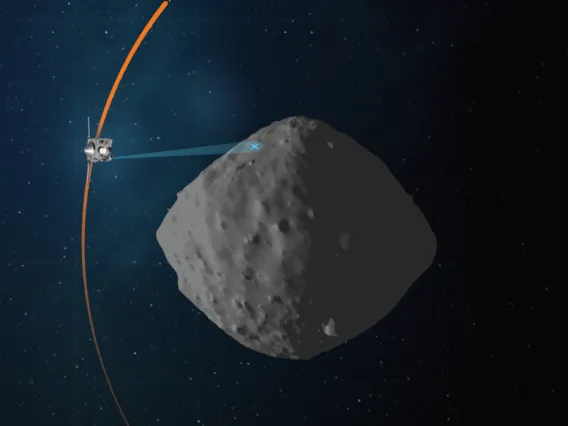
OSIRIS-REx to Fly a Farewell Tour of Bennu
The OSIRIS-REx spacecraft will swoop around Bennu one more time to collect information about how the Tough-and-Go sample collection affected the asteroid before returning home.
OSIRIS-REx to Fly a Farewell Tour of Bennu
×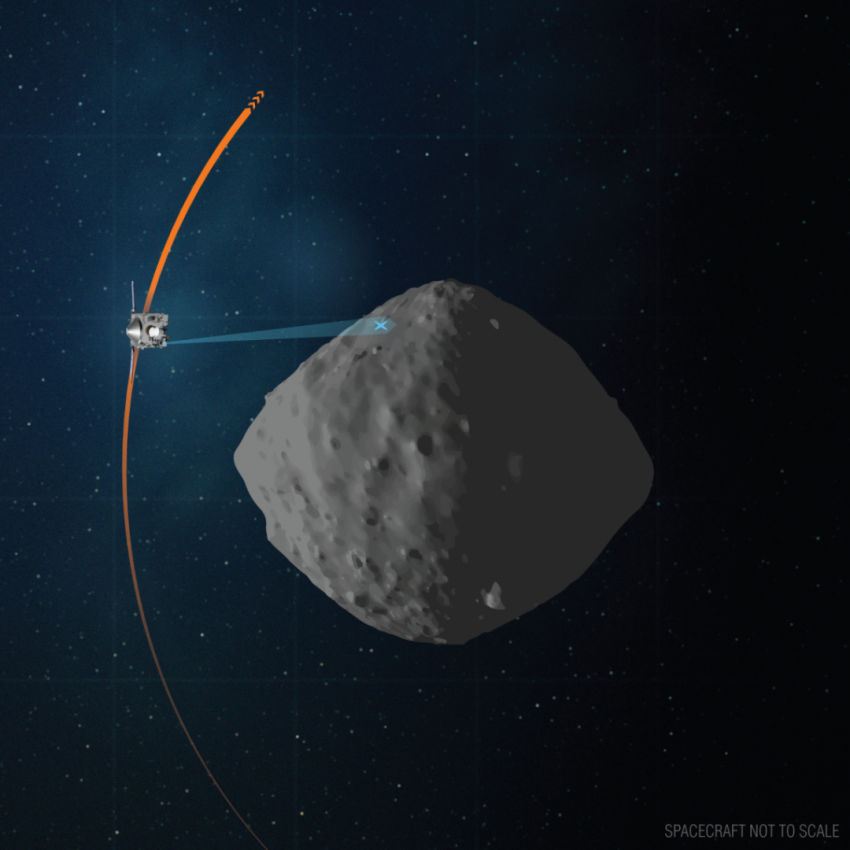
NASA Goddard Space Flight Center - February 8, 2021
On April 7, NASA's University of Arizona-led OSIRIS-REx mission will give asteroid Bennu one last glance before saying farewell. Before departing for Earth on May 10, the OSIRIS-REx spacecraft will perform a final flyby of Bennu – capturing its last images of sample collection site Nightingale to look for transformations on Bennu's surface after the Oct. 20, 2020, sample collection event.
"We are really excited that we get to take one last look at Bennu and are really curious about any way the surface might have changed as a result of TAG (the Touch-and-Go sample collection event)," said Dani DellaGiustina, lead scientist on the mission's image processing team and senior staff scientist at the UArizona Lunar and Planetary Laboratory. "We hope to compare the data in a really quantitative way with some observations we took of Bennu before TAG, almost two years ago."
The image processing team is interested in three main characteristics of the asteroid's surface.
"The first is if Bennu has gotten brighter or darker as a result of TAG," DellaGiustina said.
The second area of interest is the asteroid's color, said DellaGiustina, who was lead author of a paper that found newer material on Bennu was redder than older, bluer material.
"Our hypothesis is that Bennu will be a little redder as a result of TAG. We'll have the data to confirm or refute this," she said. "The last thing we're interested in examining for large-scale changes of Bennu's terrain."
Mission principal investigator and UArizona planetary science professor Dante Lauretta leads the mission. The university also leads the science team and the mission's science observation planning and data processing.
The OSIRIS-REx mission team recently completed a detailed safety analysis of a trajectory to observe sample site Nightingale from a distance of approximately 2.4 miles. The spacecraft's flight path is designed to keep OSIRIS-REx a safe distance from Bennu, while ensuring the science instruments can collect precise observations. The single flyby will mimic one of the observation sequences conducted during the mission's Detailed Survey phase in 2019. OSIRIS-REx will image Bennu for a full 4.3-hour rotation to obtain high-resolution images of the asteroid's northern and southern hemispheres and its equatorial region. The team will then compare these new images with the previous high-resolution imagery of Bennu obtained during 2019.
This final flyby of Bennu was not part of the original mission schedule, but the observation run will provide the team an opportunity to learn how the spacecraft's contact with Bennu's surface altered the sample site. Bennu's surface was considerably disturbed after TAG, with the collector head sinking 1.6 feet into the asteroid's surface while firing a pressurized charge of nitrogen gas. The spacecraft's thrusters also mobilized a substantial amount of surface material during the back-away burn.
During this new mission phase, called the Post-TAG Observation, or PTO, phase, the spacecraft will perform five separate navigation maneuvers in order to return to the asteroid and position itself for the flyby. OSIRIS-REx executed the first maneuver on Jan. 14, which acted as a braking burn and put the spacecraft on a trajectory to rendezvous with the asteroid one last time. Since October's sample collection event, the spacecraft has been slowly drifting away from the asteroid, and ended up approximately 1,635 miles from Bennu. After the braking burn, the spacecraft is now slowly approaching the asteroid and will perform a second approach maneuver on March 6, when it is approximately 155 miles from Bennu. OSIRIS-REx will then execute three subsequent maneuvers, which are required to place the spacecraft on a precise trajectory for the final flyby on April 7.
OSIRIS-REx is scheduled to depart Bennu on May 10 and begin its two-year journey back to Earth. The spacecraft will deliver the samples of Bennu to the Utah Test and Training Range on Sept. 24, 2023.
